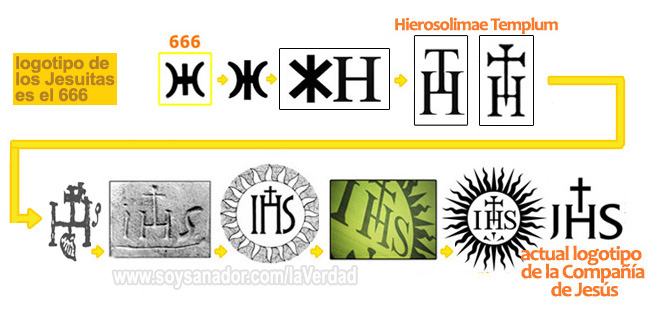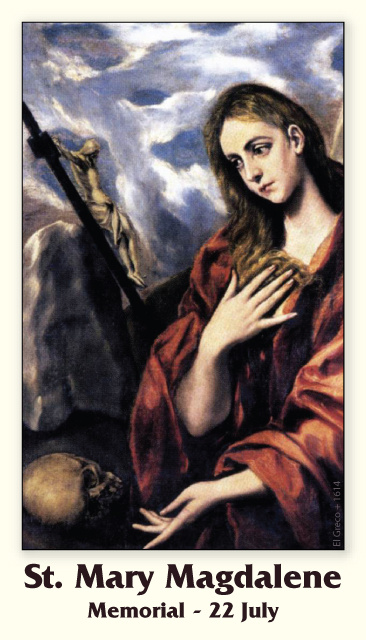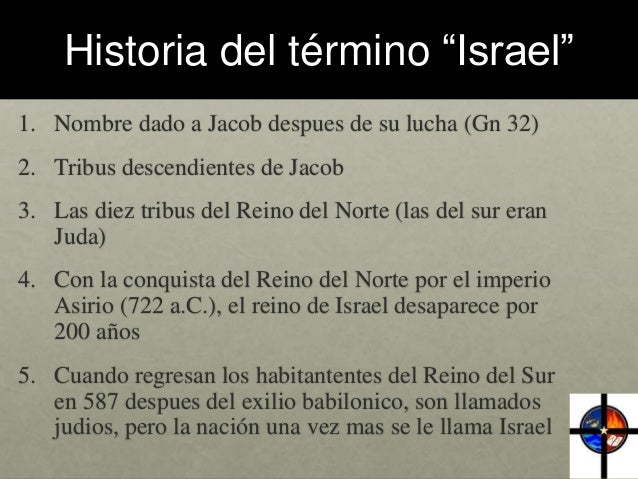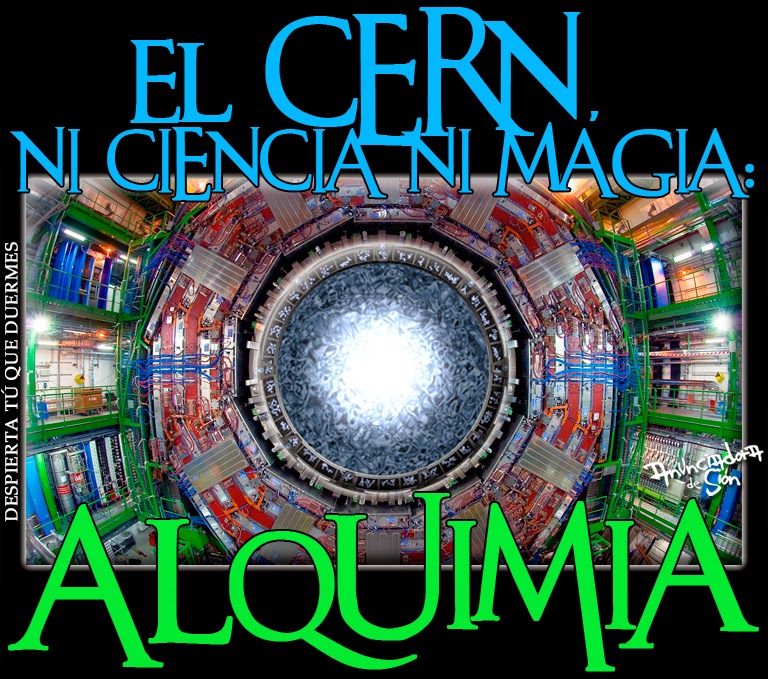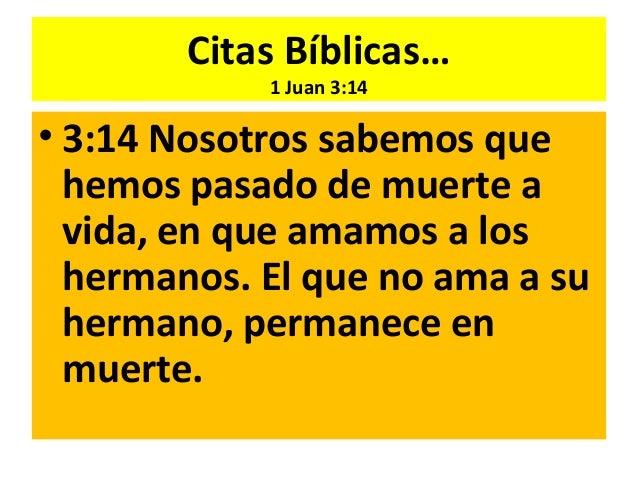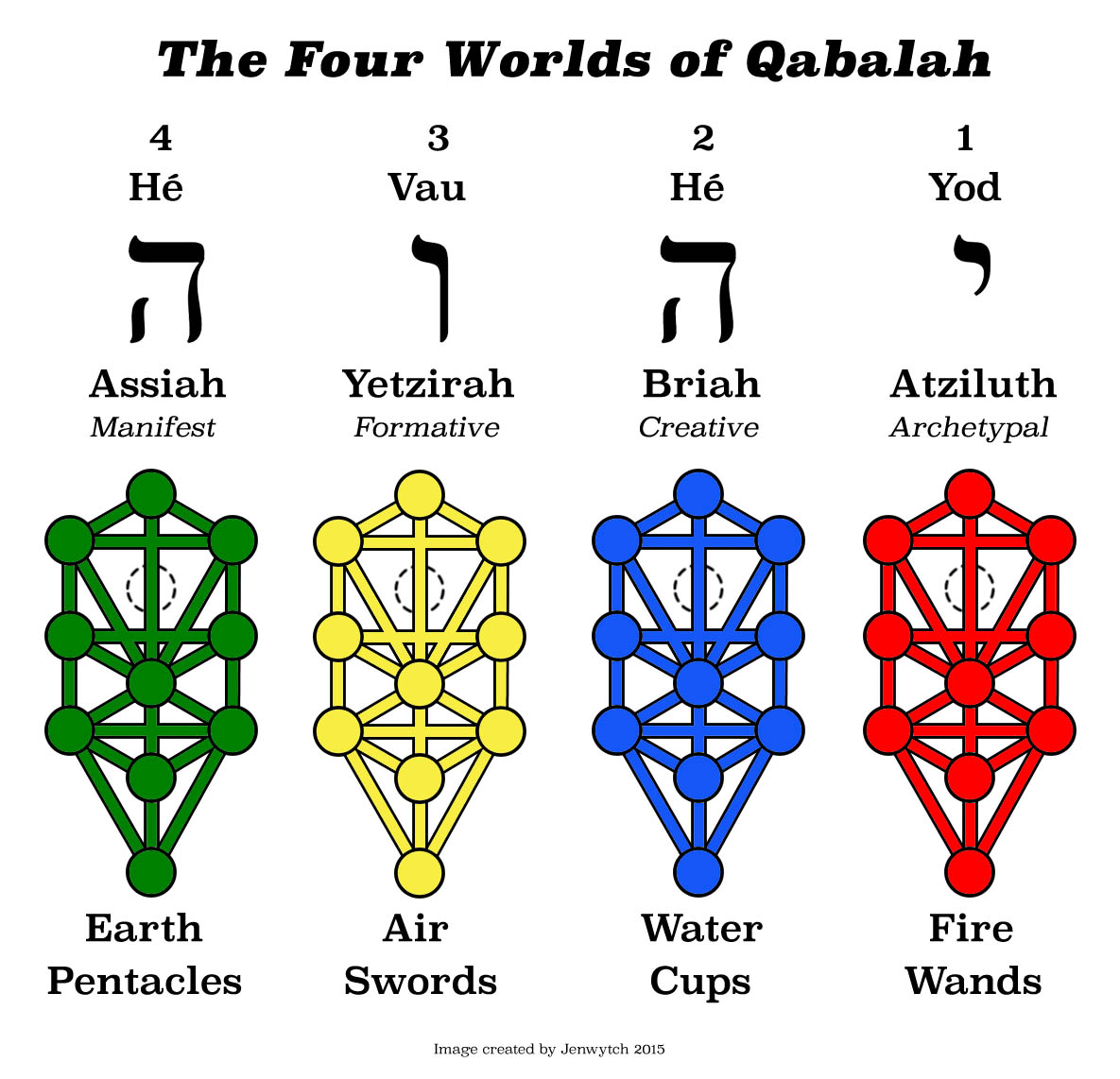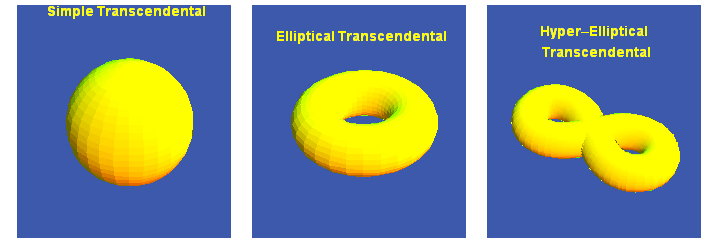|
|
This term “Pixel” which happens to be like the smoking gun in proving the artificial Matrix, is why we have “Pi” & “Phi” and “Patmos Island” as codes:
PIXEL ~~~ the number PI (3.14…)
PIXEL ~~~ the number “PHI“
PIXEL ~~~ Patmos Island
http://en.wikipedia.org/wiki/Pi
http://en.wikipedia.org/wiki/Phi
ANY SIMIL BETWEEN THE GREEK LETTER FOR No. “PI” AND THE HEBREW LETTER “H” IN THE TETRAGRAMMATON IS SHEER COINCIDENCE…?

Tetragrammaton (reads from right to left as YHVH in hebrew)
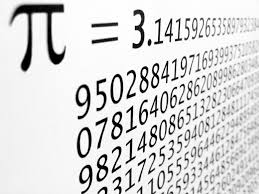
Number “PI” in the Matrix

Number “PI” as to number “PHI”
|
|
|
|
|
| Reply |
Message 97 of 97 on the subject |
|
| Reply |
Message 28 of 28 on the subject |
|
|
This term “Pixel” which happens to be like the smoking gun in proving the artificial Matrix, is why we have “Pi” & “Phi” and “Patmos Island” as codes:
PIXEL ~~~ the number PI (3.14…)
PIXEL ~~~ the number “PHI“
PIXEL ~~~ Patmos Island
http://en.wikipedia.org/wiki/Pi
http://en.wikipedia.org/wiki/Phi
ANY SIMIL BETWEEN THE GREEK LETTER FOR No. “PI” AND THE HEBREW LETTER “H” IN THE TETRAGRAMMATON IS SHEER COINCIDENCE…?

Tetragrammaton (reads from right to left as YHVH in hebrew)




Number “PI” in the Matrix

Number “PI” as to number “PHI”
| Reply |
Message 3 of 27 on the subject |
|
|
|
|
| Reply |
Message 4 of 27 on the subject |
|
|
|
|
| Reply |
Message 5 of 27 on the subject |
|
|
|
|
|
|
|
en el alfabeto ingles
I=NOVENA LETRA
H=OCTAVA LETRA
S=19VA LETRA
9+8+19=36
1+2+3+4+5+6+7+... +33+34+35+36=666
|
|
|
|
|
|
|
|
| Reply |
Message 21 of 22 on the subject |
|
|
|
|
| Reply |
Message 22 of 22 on the subject |
|
|
|
|
|
|
|
|
|
|
| Reply |
Message 224 of 224 on the subject |
|
TUESDAY, MAY 18, 2010
BORROMEAN RINGS (1/3)
“If one proceeded to announce that there is still nowadays a work of the former Egyptians, one of their books that escaped the flames that devoured their superb libraries, and which contains their purest doctrines on interesting subjects, everyone who heard, undoubtedly, would hasten to study such an invaluable book, such a marvel. If one also said that this book is very widespread in most of Europe, that for a number of centuries it has been in the hands of everyone, the surprise would be certain to increase. Would it not reach its height, if one gave assurances that no one ever suspected that it was Egyptian; that those who possessed it did not value it, that nobody ever sought to decipher a sheet of it; that the fruit of an exquisite wisdom is regarded as a cluster of extravagant figures which do not mean anything by themselves? Would it not be thought that the speaker wanted to amuse himself, and played on the credulity of his listeners?”
BORROMEAN RINGS
RING ONE: hidden element
3 Rings linked together, their centers being vertices (corners) of an equilateral Triangle.
Viewed in this diagram, we are looking at a 2-dimensional map of Earth from its side, represented by One ring of our choosing (blue): 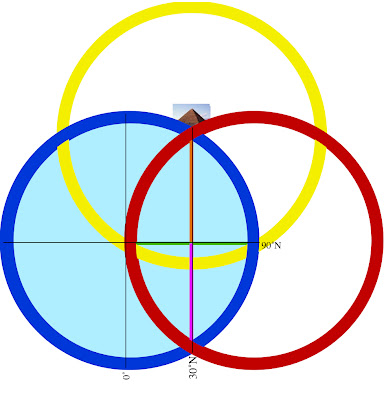 Orient the planet so the Great Pyramid at Giza (30˚N) lays at one of the vertices, the Earth’s center at another, and its axis’ North pole at the third. Exploring this set of relations, it can be demonstrated that the architectural proportions of the Great Pyramid at Giza exhibit a means of utilizing the measure of Earth to express the mathematical constant, π. To understand how we must suspend, for a moment, our habit of thinking of number in purely quantitative terms and consider the ways in which some numbers are also inherently bound to specific geometric forms - like with ‘square’ (1² 2² 3² 4² 5²...) or ‘cubed’ (1³ 2³ 3³ 4³ 5³...) numbers we see a sum attached to a particular shape. Other shapes each possess their own sequence of numbers also attached to their change in proportion. These are called ‘figurate numbers’, and tradition has it they were introduced into Greek mathematics by the pre-Socratic philosopher, Pythagoras, in the 6th century BC. A student of the ancient mystery schools, it is likely he acquired this knowledge during his journeys to Chaldea & Egypt; but all that is really required to calculate the number sequences tied to these shapes is a stack of pebbles and time to spare, counting out the variety of polygons & devising ways of stacking them to construct polyhedrons. To the careful interpreter of nature a pattern was discernible amidst this numerical data - One that, properly placed, could be applied to the measure of all things. It is suggested here that the Great Pyramid at Giza, in relation to the 3-Ring structure given above, embodies this application. Let us then imagine the Great Pyramid as keystone to a system of ‘projective numerology’ - an application of mathematics using figurate numbers to model distances and proportions as shapes, and translating them into their related forms as ‘seen’ from different angles & in other dimensions. At the root of any square pyramid’s architecture is its’ seked - an ancient Egyptian ratio of angular measure used to determine the slope of a pyramid’s sides and thus its’ height.  Utilizing the seked of the Great Pyramid, the perimeter of a square pyramidal base equals the circumference of a circle whose radius is equal to that pyramid’s height. Within our 2-dimensional map, as our planet rotates upon its’ axis, the Pyramid appears to move from one end of a vesica piscis to the other, as if turning on a Wheel whose rim is the 30th parallel. Thus, in one quarter turn (11/14 ≈ π/4) the Pyramid appears to move in a perpendicular line to the base of the equilateral Triangle articulated within our 3-ring diagram. 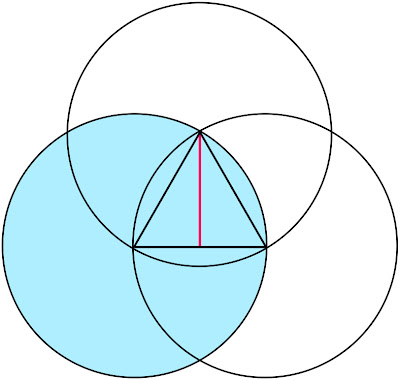  The distance of this perpendicular line from the Great Pyramid to the Earth’s polar axis is 3430 nautical miles, or 10x the cube of seven. Let us then imagine this distance as a stack of 10 cubes, 7x7x7.  A ‘quarter turn’ (11/14) of the Earth thus ‘apportions’ a 10x10 square of these cubes: 10² x 14/11 = 127.27272727...  So, by the logic induced with this arrangement of proportions, distances can be pictured in the mind’s Eye as figurate numbers of octahedral symmetry with 7-unit sides. Reading the Run & Rise of the Great Pyramid’s seked both forward and backward we get a formula for modeling a linear distance of the Earth’s measure as a column made of figurative cubes. 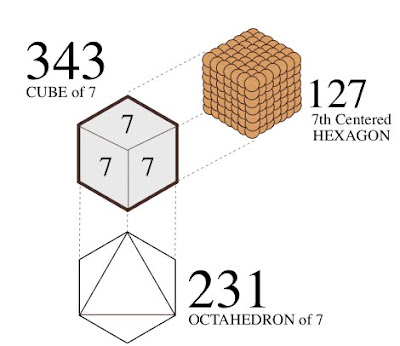 [3d:2d = 343 : 127 ] [3d:2d = 343 : 127 ]As such, we can picture the square pyramid monument atop this ‘column’ as pointing to the center of an imaginary 11th cube. 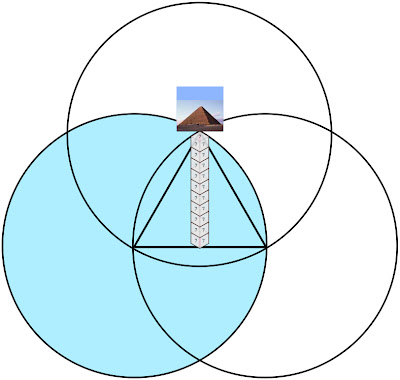 It follows, then, that a 12-hour rotation (180˚) measures a distance from center-point to center-point of the cubes at either end of a column 22 cubes of 7 long. 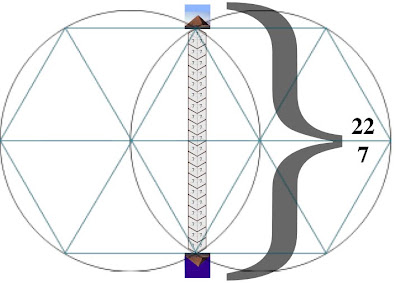 The center point of a unit cube has a specific relationship to the vesica piscis traversed in this 12-hour ‘distance’ within our diagram, as Two rings sharing a single radius give a rational approximation for √3, which is also the space diagonal of any unit cube. 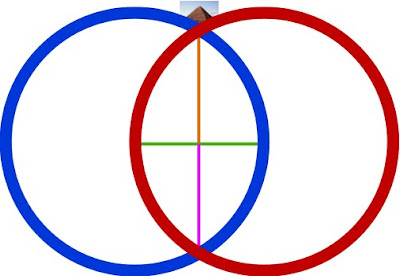  In other words, with respect to a unit cube, the √3 is the distance between opposite corners of that cube. Tracing these space diagonal lines joins the opposing corners, all of which intersect at the center of that cube, and thereby delineate the edges of six square pyramids joined at their apex.  22:7 ≈ π 22:7 ≈ πTo the Egyptian god Thoth, equated with the Greek god, Hermes, and particularly the Roman god, Mercury, this ratio is significant in describing the number of conjunctions aligning Mercury & Earth with the Sun every 7 years. Also known as a ‘synodic cycle’, this is an example of what ancient Greek astronomers called an exeligmos, or ‘Turn of the Wheel’ - describing any period wherein Sun, Moon, and/or planets return to conjunction(s) from which they started. The term is still used today, but is more specifically applied to the Triple Saros cycle of reckoning lunar eclipses, each 120º of longitude apart, eventually returning to a point relatively close to where they began: exeligmos. The Romans used the term annus magnus, or ‘great year’ to describe the same class of periodic event. As we shall see, each of the planets have a harmonic ratio of conjunctions with our planet Earth, and with each other. By fixing the Earth to the center of our ecliptic plane, the motion of other planets relative to our position appear as serpentine spiro-graph patterns, looping in close when aligning into conjunction with the Sun, and looping out to trace a wide arc that coils about the Earth until looping in again for another conjunction. 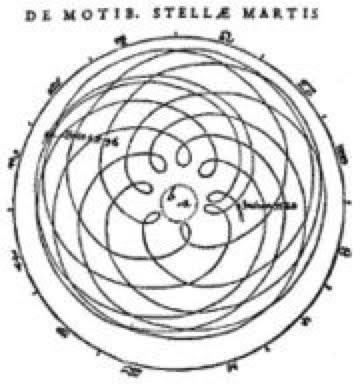 Mars:Earth  Venus: Earth Consistent within our model of 10 cubes of seven, the Great Pyramid (pointing to the center of an eleventh) also corresponds to the tip of an octahedron of 7 = 231. And it just so happens that 11x 231 is the number of days in the exeligmos of Mercury & Earth, 22:7. In addition, the measure of the Great Pyramid’s base side lengths (440 cubits each) give a total base area measuring approximately 231 meters square. Being a close approximation of the value π, and our annus magnus with the planet Mercury (Hermes/Thoth), let us then imagine this column of 22 cubes of 7 as the staff of his Caduceus. As we shall see, the cycles of the other planets can be represented as the serpents entwined about this Staff, their helices in tune with the ratio of their exeligmos. Imparting more than just the inevitable passage of Time, they were the very music of the spheres by which the harmony of creation was made known to the ancient Geometers. Our 3-Rings establish the base unit of an entire system of weights & measures (metrology) by symbolizing an angular dimension constructed by the movement through Time of the Great Pyramid, like the point of a metronome entrained to the Earth’s tempo. In effect attuning the mathematical constant π with Mercury's Great Year & the linear measure of Earth's size in units of angular measure. 'Squaring' the circle much like the Great Pyramid's seked. 1 nautical mile = 1.15 miles The nautical mile used as our base unit of measure for obtaining the distance in cubes of seven is also a unit of angular measure equivalent to 1/60th degree of Earth longitude (=1 minute of arc degree). Converting this into survey land miles = 1/10² the number of days between Earth:Mercury conjunctions (=115). 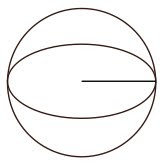 22:7 = 12 hrs @ 30˚north (12x 30 = 360) 180˚ = 10,800 arc minutes of degree = 50x 216, the cube of 6 216 also equals the number of degrees between Earth:Venus conjunctions (x5 = 1 Earth:Venus pentagram = exeligmos). So, by subdividing each degree of arc into 60 minutes, Earth’s 180˚ rotation (22:7) upon its’ axis thereby possesses a kind of numerological resonance regarding its harmonic with Venus, the exeligmos of the pentagram. Reputedly a symbol of good will among the Pythagoreans, the pentagram also provides an easy means of obtaining the golden ratio. 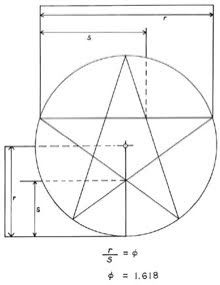 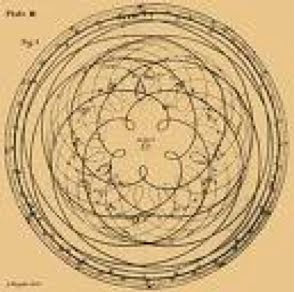 12 : 1 = (22/7) = 60 minutes In this way our measure of both Time & Space define each other by weaving together the value π with the ‘divine proportion’ of the golden ratio. Of the numerous other curious facets to this TooL of Hermetic Metrology, establishing not only our system of weights & measures, its choice of cubes & octahedrons also exhibit a direct connection to speeds of both sound & light: 1 meter =distance trave1ed by sound 1/343th of second =distance trave1ed by light 1/299,792,458th of second 343 = cube of 7 299,792,458 = c = speed of light in meters per second 1296000 / π = number of square degrees in one whole sphere c / 1296000 = 231.321.... 231 = octahedron of 7 Stranger still, the proportions outlined above are also paralleled in the numerical structure of the Tarot de Marseilles’ pattern of 22 major arcana trumps when applied to the Hebrew alphabet - in turn derived from Egyptian (via proto-Sinaitic) hieroglyphs which depicted the symbols those letters are still associated with.  We see traces of this tradition within our own English alphabet with the letter A: also the glyph for an Ox head (turned upside-down) having the same origin as the Hebrew letter aleph. 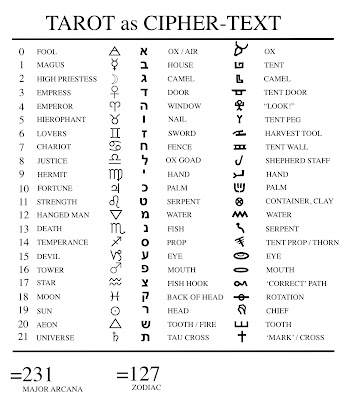 Referred to by 'occultists' as the Book of Thoth (though never adequately explained why), the key to unlocking this puzzle, as with any cryptological TooL, is knowing where to place the cypher, or sifr - the arabic word from which we also get Zero, or ‘nothing’, the rank of every Tarot deck’s Fool [aleph=0]. And this role proves more than suitable for One who ushers in what ultimately reveals a prank, of sorts... leading to what is arguably the greatest punch-line in history.
|
|
|
|
|
|
|
|
| Reply |
Message 21 of 28 on the subject |
|
|
|
|
| Reply |
Message 22 of 28 on the subject |
|
|
|
| Reply |
Message 539 of 550 on the subject |
|
|
|
|
|
| Reply |
Message 224 of 224 on the subject |
|
TUESDAY, MAY 18, 2010
BORROMEAN RINGS (1/3)
“If one proceeded to announce that there is still nowadays a work of the former Egyptians, one of their books that escaped the flames that devoured their superb libraries, and which contains their purest doctrines on interesting subjects, everyone who heard, undoubtedly, would hasten to study such an invaluable book, such a marvel. If one also said that this book is very widespread in most of Europe, that for a number of centuries it has been in the hands of everyone, the surprise would be certain to increase. Would it not reach its height, if one gave assurances that no one ever suspected that it was Egyptian; that those who possessed it did not value it, that nobody ever sought to decipher a sheet of it; that the fruit of an exquisite wisdom is regarded as a cluster of extravagant figures which do not mean anything by themselves? Would it not be thought that the speaker wanted to amuse himself, and played on the credulity of his listeners?”
BORROMEAN RINGS
RING ONE: hidden element
3 Rings linked together, their centers being vertices (corners) of an equilateral Triangle.
Viewed in this diagram, we are looking at a 2-dimensional map of Earth from its side, represented by One ring of our choosing (blue):  Orient the planet so the Great Pyramid at Giza (30˚N) lays at one of the vertices, the Earth’s center at another, and its axis’ North pole at the third. Exploring this set of relations, it can be demonstrated that the architectural proportions of the Great Pyramid at Giza exhibit a means of utilizing the measure of Earth to express the mathematical constant, π. To understand how we must suspend, for a moment, our habit of thinking of number in purely quantitative terms and consider the ways in which some numbers are also inherently bound to specific geometric forms - like with ‘square’ (1² 2² 3² 4² 5²...) or ‘cubed’ (1³ 2³ 3³ 4³ 5³...) numbers we see a sum attached to a particular shape. Other shapes each possess their own sequence of numbers also attached to their change in proportion. These are called ‘figurate numbers’, and tradition has it they were introduced into Greek mathematics by the pre-Socratic philosopher, Pythagoras, in the 6th century BC. A student of the ancient mystery schools, it is likely he acquired this knowledge during his journeys to Chaldea & Egypt; but all that is really required to calculate the number sequences tied to these shapes is a stack of pebbles and time to spare, counting out the variety of polygons & devising ways of stacking them to construct polyhedrons. To the careful interpreter of nature a pattern was discernible amidst this numerical data - One that, properly placed, could be applied to the measure of all things. It is suggested here that the Great Pyramid at Giza, in relation to the 3-Ring structure given above, embodies this application. Let us then imagine the Great Pyramid as keystone to a system of ‘projective numerology’ - an application of mathematics using figurate numbers to model distances and proportions as shapes, and translating them into their related forms as ‘seen’ from different angles & in other dimensions. At the root of any square pyramid’s architecture is its’ seked - an ancient Egyptian ratio of angular measure used to determine the slope of a pyramid’s sides and thus its’ height.  Utilizing the seked of the Great Pyramid, the perimeter of a square pyramidal base equals the circumference of a circle whose radius is equal to that pyramid’s height. Within our 2-dimensional map, as our planet rotates upon its’ axis, the Pyramid appears to move from one end of a vesica piscis to the other, as if turning on a Wheel whose rim is the 30th parallel. Thus, in one quarter turn (11/14 ≈ π/4) the Pyramid appears to move in a perpendicular line to the base of the equilateral Triangle articulated within our 3-ring diagram.   The distance of this perpendicular line from the Great Pyramid to the Earth’s polar axis is 3430 nautical miles, or 10x the cube of seven. Let us then imagine this distance as a stack of 10 cubes, 7x7x7.  A ‘quarter turn’ (11/14) of the Earth thus ‘apportions’ a 10x10 square of these cubes: 10² x 14/11 = 127.27272727...  So, by the logic induced with this arrangement of proportions, distances can be pictured in the mind’s Eye as figurate numbers of octahedral symmetry with 7-unit sides. Reading the Run & Rise of the Great Pyramid’s seked both forward and backward we get a formula for modeling a linear distance of the Earth’s measure as a column made of figurative cubes.  [3d:2d = 343 : 127 ] [3d:2d = 343 : 127 ]As such, we can picture the square pyramid monument atop this ‘column’ as pointing to the center of an imaginary 11th cube.  It follows, then, that a 12-hour rotation (180˚) measures a distance from center-point to center-point of the cubes at either end of a column 22 cubes of 7 long. It follows, then, that a 12-hour rotation (180˚) measures a distance from center-point to center-point of the cubes at either end of a column 22 cubes of 7 long. The center point of a unit cube has a specific relationship to the vesica piscis traversed in this 12-hour ‘distance’ within our diagram, as Two rings sharing a single radius give a rational approximation for √3, which is also the space diagonal of any unit cube.   In other words, with respect to a unit cube, the √3 is the distance between opposite corners of that cube. Tracing these space diagonal lines joins the opposing corners, all of which intersect at the center of that cube, and thereby delineate the edges of six square pyramids joined at their apex.  22:7 ≈ π 22:7 ≈ πTo the Egyptian god Thoth, equated with the Greek god, Hermes, and particularly the Roman god, Mercury, this ratio is significant in describing the number of conjunctions aligning Mercury & Earth with the Sun every 7 years. Also known as a ‘synodic cycle’, this is an example of what ancient Greek astronomers called an exeligmos, or ‘Turn of the Wheel’ - describing any period wherein Sun, Moon, and/or planets return to conjunction(s) from which they started. The term is still used today, but is more specifically applied to the Triple Saros cycle of reckoning lunar eclipses, each 120º of longitude apart, eventually returning to a point relatively close to where they began: exeligmos. The Romans used the term annus magnus, or ‘great year’ to describe the same class of periodic event. As we shall see, each of the planets have a harmonic ratio of conjunctions with our planet Earth, and with each other. By fixing the Earth to the center of our ecliptic plane, the motion of other planets relative to our position appear as serpentine spiro-graph patterns, looping in close when aligning into conjunction with the Sun, and looping out to trace a wide arc that coils about the Earth until looping in again for another conjunction.  Mars:Earth  Venus: Earth Consistent within our model of 10 cubes of seven, the Great Pyramid (pointing to the center of an eleventh) also corresponds to the tip of an octahedron of 7 = 231. And it just so happens that 11x 231 is the number of days in the exeligmos of Mercury & Earth, 22:7. In addition, the measure of the Great Pyramid’s base side lengths (440 cubits each) give a total base area measuring approximately 231 meters square.Being a close approximation of the value π, and our annus magnus with the planet Mercury (Hermes/Thoth), let us then imagine this column of 22 cubes of 7 as the staff of his Caduceus. As we shall see, the cycles of the other planets can be represented as the serpents entwined about this Staff, their helices in tune with the ratio of their exeligmos.Imparting more than just the inevitable passage of Time, they were the very music of the spheres by which the harmony of creation was made known to the ancient Geometers. Our 3-Rings establish the base unit of an entire system of weights & measures (metrology) by symbolizing an angular dimension constructed by the movement through Time of the Great Pyramid, like the point of a metronome entrained to the Earth’s tempo. In effect attuning the mathematical constant π with Mercury's Great Year & the linear measure of Earth's size in units of angular measure. 'Squaring' the circle much like the Great Pyramid's seked. 1 nautical mile = 1.15 miles The nautical mile used as our base unit of measure for obtaining the distance in cubes of seven is also a unit of angular measure equivalent to 1/60th degree of Earth longitude (=1 minute of arc degree). Converting this into survey land miles = 1/10² the number of days between Earth:Mercury conjunctions (=115).  22:7 = 12 hrs @ 30˚north (12x 30 = 360)180˚ = 10,800 arc minutes of degree = 50x 216, the cube of 6216 also equals the number of degrees between Earth:Venus conjunctions (x5 = 1 Earth:Venus pentagram = exeligmos). So, by subdividing each degree of arc into 60 minutes, Earth’s 180˚ rotation (22:7) upon its’ axis thereby possesses a kind of numerological resonance regarding its harmonic with Venus, the exeligmos of the pentagram. Reputedly a symbol of good will among the Pythagoreans, the pentagram also provides an easy means of obtaining the golden ratio. 22:7 = 12 hrs @ 30˚north (12x 30 = 360)180˚ = 10,800 arc minutes of degree = 50x 216, the cube of 6216 also equals the number of degrees between Earth:Venus conjunctions (x5 = 1 Earth:Venus pentagram = exeligmos). So, by subdividing each degree of arc into 60 minutes, Earth’s 180˚ rotation (22:7) upon its’ axis thereby possesses a kind of numerological resonance regarding its harmonic with Venus, the exeligmos of the pentagram. Reputedly a symbol of good will among the Pythagoreans, the pentagram also provides an easy means of obtaining the golden ratio.  12 : 1 = (22/7) = 60 minutes In this way our measure of both Time & Space define each other by weaving together the value π with the ‘divine proportion’ of the golden ratio. Of the numerous other curious facets to this TooL of Hermetic Metrology, establishing not only our system of weights & measures, its choice of cubes & octahedrons also exhibit a direct connection to speeds of both sound & light: 1 meter =distance trave1ed by sound 1/343th of second =distance trave1ed by light 1/299,792,458th of second 343 = cube of 7 299,792,458 = c = speed of light in meters per second 1296000 / π = number of square degrees in one whole sphere c / 1296000 = 231.321.... 231 = octahedron of 7 Stranger still, the proportions outlined above are also paralleled in the numerical structure of the Tarot de Marseilles’ pattern of 22 major arcana trumps when applied to the Hebrew alphabet - in turn derived from Egyptian (via proto-Sinaitic) hieroglyphs which depicted the symbols those letters are still associated with.  We see traces of this tradition within our own English alphabet with the letter A: also the glyph for an Ox head (turned upside-down) having the same origin as the Hebrew letter aleph.  Referred to by 'occultists' as the Book of Thoth (though never adequately explained why), the key to unlocking this puzzle, as with any cryptological TooL, is knowing where to place the cypher, or sifr - the arabic word from which we also get Zero, or ‘nothing’, the rank of every Tarot deck’s Fool [aleph=0]. And this role proves more than suitable for One who ushers in what ultimately reveals a prank, of sorts... leading to what is arguably the greatest punch-line in history.
|
|
|
|
|
|
|
|
|
LA LETRA S (SABIDURIA/SABADO/DRACO/$) EN EL ALFABETO INGLES ES LA LETRA NUMERO 19-IMPRESIONANTE CLAVE MASONICA CON REFERENCIA AL SABADO SEGUN LAS FASES DE LA LUNA
|
|
|
|
|
|
EL origen de la PROPORCIÓN DIVINA – de la geometría sagrada – lo mismo que toda cosa perfecta, el hombre de fe lo encuentra en Dios, "creador del cielo y de la tierra, de todo lo visible e invisible." Según el Prólogo del Evangelio de San Juan, "Al principio era el Verbo." En el mundo de las cosas visibles, la armonía, en su esencia divina, manifiesta relaciones ideales en su forma visual accesible a la experiencia sensible. Gracias al encuentro de este fenómeno de aparición donde Dios se manifiesta, el hombre reconoce la obra que contiene en sí el sello del Creador. Dejando aparte la cuestión de las armonías perfectas de orden cósmico, visibles pues en la naturaleza, en la creación de las cuales el hombre no ha participado – y que representan al mismo tiempo los límites y el contexto impuesto a la existencia terrestre humana –, queda la cuestión de las armonías perfectas que el hombre ha creado y que crea. En la búsqueda de una respuesta, dos caminos superpuestos aparecen. Sobre el primero, estoy tentado de ver la voluntad del Creador que, creando el hombre a su imagen, lo ha dotado de una capacidad creadora y de una necesidad interior de expresión. Constatamos que el hombre, en la historia de su existencia terrestre, en la cumbre de su creación, ha realizado obras maestras destinadas a la celebración del nombre de Dios y de su naturaleza divina. Lo que Dios da al hombre, el hombre creyente y franc-masón se lo devuelve, y, por su devolución, reconoce en sí la finalidad y el sentido de la existencia humana: "El Templo de Jerusalén destinado a formar un emblema universal fue levantado sobre planos trazados por una mano superior que no fueron invención de ningún hombre." Sobre el segundo camino, que se supone estar superpuesto al anterior y que va en el mismo sentido, veo la revelación de la belleza y de la fuerza verdaderas contenidas en las armonías perfectas fundadas sobre las proporciones de origen divino. Esta revelación es la que los profanos designan de ordinario como inspiración. Al respecto, el ejemplo del plan del Templo que David transmite a su hijo gracias a la revelación del Espíritu es iluminador. Este ejemplo es comparado juiciosamente por Jean Ursin con el ejemplo de la "Morada" de la que Yahveh ha dicho a Moisés: "¡Según todo lo que te muestro como modelo fiel de la Morada, y como el modelo de todo su mobiliario, así harás!" La revelación, que considero como la consciencia de una idea en su totalidad, fruto de la intuición, escapa muy evidentemente a cada forma de conocimiento fundada sobre la lógica clásica y sobre los métodos científicos. Visto a través del prisma del razonamiento franc-masónico, bajo la acción de energías escondidas, puestas en una relación particular e inaccesibles a una aproximación del conocimiento clásico y del razonamiento puramente científico, el ejemplo de la divina proporción, el más extendido, se refleja en lo que se llama el número de oro. Su utilización en la arquitectura del Egipto antiguo, en la Grecia antigua u otra, ha dado templos de aspecto estético-plástico indudablemente armoniosos. Desde un punto de vista matemático, el número de oro es aproximadamente igual a 1,618. Su expresión matemática es: 5 + 1 2 es decir que se debe tomar el único número positivo que multiplicado por sí mismo da 5, al cual se le llama la raíz cuadrada de 5, se le añade 1, y se divide por 2. Tiene ciertas propiedades matemáticas curiosas, como ésta: si se considera un "gran" rectángulo cuya longitud dividida por la anchura es igual al número de oro, se le puede cortar en dos en el sentido de la anchura y obtener un cuadrado de lado igual a la anchura inicial, y un pequeño rectángulo cuya longitud dividida por la anchura es también el número de oro. El número de oro es el único número que tiene esta propiedad. Este hecho matemático interesante, según el cual el número de oro es el único número que tiene esta propiedad, puede mostrar, justamente por su singularidad, el origen divino de la armonía fundada en la proporción expresada matemáticamente por este número o por un rectángulo de proporciones dadas, lo que es en sí una forma geométrica. En el mundo de la ciencia, la geometría pertenece a la disciplina de los matemáticos quienes la definen como "la ciencia y el estudio de los espacios". Hasta el siglo XVIII, la geometría fue la de Euclides, llamada "clásica"; se sustentaba en las definiciones y los postulados de Euclides, y en otros axiomas imaginados por la observación y la intuición. Fue al final del siglo XIX cuando Hilbert dio fundamentos más sólidos hallando un sistema de axiomas verdaderamente matemáticos. Uno de estos axiomas es el "quinto postulado de Euclides" que dice: "dados una recta D y un punto P del plano, existe una única recta que pase por este punto y sea paralela a D." Modificando este axioma, se obtiene o bien la geometría proyectiva (geometría de un espacio cuyos elementos no son puntos, sino rectas), o bien la geometría de Riemann (llamada geometría elíptica) que se sitúa en un espacio que tendría las mismas propiedades que la superficie de una esfera, o bien la geometría hiperbólica de Lobatchevski-Bolyal, en la que el plano es reemplazado por una especie de silla de montar. Hoy día se considera que el estudio de las transformaciones del espacio es una parte importante de la geometría, lo mismo que el estudio de las superficies (geometría diferencial), o también de las curvas de ciertas funciones particulares (geometría algebraica). A la luz de los FRANCMASONES , las formas de las propiedades geométricas tienen otro significado tanto en el plano simbólico como en el plano energético, ambos indisolubles. Y justamente en el espejo de esta luz, esas formas, independientemente de los matemáticos y de los valores estéticos que pueden llenarlas, manifiestan, en el contexto de la utilización artística (arquitectura, pintura, escultura, gravado... ), una dimensión profunda, que sobrepasa las dimensiones semánticas del significado habitual, refiriéndose a lo que es sagrado, en lo cual encuentran su plenitud. La historia legendaria del oficio que concierne a "las siete ciencias", se encuentra: "Todos describen las siete ciencias liberales en un orden a veces diferente. En la Edad Media, los escolásticos las dividían en dos partes: 1. El trivium, que comprendía la gramática, la retórica y la dialéctica. 2. El quadrivium, la aritmética, la geometría, la música y la astronomía. Todos nuestros autores están de acuerdo para hacer de la geometría la primera de las ciencias: "... gracias a la buena geometría, este honesto oficio que es la buena masonería fue así constituido y creado" Regius, 19 – 20 – 21. Por otra parte, el mismo autor evoca a "Euclides, alumno de Abraham" donde escribe: "Después se llega a Euclides, ese matemático griego que vivía en Alejandría en el siglo III a. de C. ¡No es sin sorpresa que se lee que Euclides, "nuestro noble sabio Euclides", fue en Egipto alumno de Abraham! Abraham acompañado de su mujer Sara fue al país de Canaán, y se vio apremiado por el hambre a refugiarse en Egipto, pues, como lo dice la crónica, "Abraham era hombre prudente y gran sabio. Conocía todas las VII ciencias y enseñó a los Egipcios la ciencia de la geometría". Por fin, más adelante se encuentra en la misma obra: "Retengamos que para todos, la geometría es, si no la madre de las otras seis, al menos la primera." "La geometría permite discernir con certeza lo verdadero de lo falso." "La geometría es la base de todas las otras. Todas no existen más que gracias a la ciencia de la geometría. Y la geometría es la medida de la tierra." : "La geometría enseña al hombre la proporción y la medida de la tierra." "ninguna actividad humana es posible sin pesar ni medir", dicho de otro modo, sin la geometría "ninguna ciencia sirve a los hombres para medir". "En conclusión, la geometría es el fundamento de todas las ciencias." Rebasando su papel en la masonería operativa, en el dominio de la construcción, la geometría está enraizada, en nombre de su origen, lo mismo que la divina proporción, en el Ser sagrado y en su plenitud. Así, en el contexto de la simbólica Franc-Masónica, las formas geométricas (como la esfera por ejemplo) designan a Dios. "Dios es una esfera cuyo centro está en todas partes y la circunferencia en ninguna."
|
|
|
|
|
|
|
EL origen de la PROPORCIÓN DIVINA – de la geometría sagrada – lo mismo que toda cosa perfecta, el hombre de fe lo encuentra en Dios, "creador del cielo y de la tierra, de todo lo visible e invisible." Según el Prólogo del Evangelio de San Juan, "Al principio era el Verbo." En el mundo de las cosas visibles, la armonía, en su esencia divina, manifiesta relaciones ideales en su forma visual accesible a la experiencia sensible. Gracias al encuentro de este fenómeno de aparición donde Dios se manifiesta, el hombre reconoce la obra que contiene en sí el sello del Creador. Dejando aparte la cuestión de las armonías perfectas de orden cósmico, visibles pues en la naturaleza, en la creación de las cuales el hombre no ha participado – y que representan al mismo tiempo los límites y el contexto impuesto a la existencia terrestre humana –, queda la cuestión de las armonías perfectas que el hombre ha creado y que crea. En la búsqueda de una respuesta, dos caminos superpuestos aparecen. Sobre el primero, estoy tentado de ver la voluntad del Creador que, creando el hombre a su imagen, lo ha dotado de una capacidad creadora y de una necesidad interior de expresión. Constatamos que el hombre, en la historia de su existencia terrestre, en la cumbre de su creación, ha realizado obras maestras destinadas a la celebración del nombre de Dios y de su naturaleza divina. Lo que Dios da al hombre, el hombre creyente y franc-masón se lo devuelve, y, por su devolución, reconoce en sí la finalidad y el sentido de la existencia humana: "El Templo de Jerusalén destinado a formar un emblema universal fue levantado sobre planos trazados por una mano superior que no fueron invención de ningún hombre." Sobre el segundo camino, que se supone estar superpuesto al anterior y que va en el mismo sentido, veo la revelación de la belleza y de la fuerza verdaderas contenidas en las armonías perfectas fundadas sobre las proporciones de origen divino. Esta revelación es la que los profanos designan de ordinario como inspiración. Al respecto, el ejemplo del plan del Templo que David transmite a su hijo gracias a la revelación del Espíritu es iluminador. Este ejemplo es comparado juiciosamente por Jean Ursin con el ejemplo de la "Morada" de la que Yahveh ha dicho a Moisés: "¡Según todo lo que te muestro como modelo fiel de la Morada, y como el modelo de todo su mobiliario, así harás!" La revelación, que considero como la consciencia de una idea en su totalidad, fruto de la intuición, escapa muy evidentemente a cada forma de conocimiento fundada sobre la lógica clásica y sobre los métodos científicos. Visto a través del prisma del razonamiento franc-masónico, bajo la acción de energías escondidas, puestas en una relación particular e inaccesibles a una aproximación del conocimiento clásico y del razonamiento puramente científico, el ejemplo de la divina proporción, el más extendido, se refleja en lo que se llama el número de oro. Su utilización en la arquitectura del Egipto antiguo, en la Grecia antigua u otra, ha dado templos de aspecto estético-plástico indudablemente armoniosos. Desde un punto de vista matemático, el número de oro es aproximadamente igual a 1,618. Su expresión matemática es: 5 + 1 2 es decir que se debe tomar el único número positivo que multiplicado por sí mismo da 5, al cual se le llama la raíz cuadrada de 5, se le añade 1, y se divide por 2. Tiene ciertas propiedades matemáticas curiosas, como ésta: si se considera un "gran" rectángulo cuya longitud dividida por la anchura es igual al número de oro, se le puede cortar en dos en el sentido de la anchura y obtener un cuadrado de lado igual a la anchura inicial, y un pequeño rectángulo cuya longitud dividida por la anchura es también el número de oro. El número de oro es el único número que tiene esta propiedad. Este hecho matemático interesante, según el cual el número de oro es el único número que tiene esta propiedad, puede mostrar, justamente por su singularidad, el origen divino de la armonía fundada en la proporción expresada matemáticamente por este número o por un rectángulo de proporciones dadas, lo que es en sí una forma geométrica. En el mundo de la ciencia, la geometría pertenece a la disciplina de los matemáticos quienes la definen como "la ciencia y el estudio de los espacios". Hasta el siglo XVIII, la geometría fue la de Euclides, llamada "clásica"; se sustentaba en las definiciones y los postulados de Euclides, y en otros axiomas imaginados por la observación y la intuición. Fue al final del siglo XIX cuando Hilbert dio fundamentos más sólidos hallando un sistema de axiomas verdaderamente matemáticos. Uno de estos axiomas es el "quinto postulado de Euclides" que dice: "dados una recta D y un punto P del plano, existe una única recta que pase por este punto y sea paralela a D." Modificando este axioma, se obtiene o bien la geometría proyectiva (geometría de un espacio cuyos elementos no son puntos, sino rectas), o bien la geometría de Riemann (llamada geometría elíptica) que se sitúa en un espacio que tendría las mismas propiedades que la superficie de una esfera, o bien la geometría hiperbólica de Lobatchevski-Bolyal, en la que el plano es reemplazado por una especie de silla de montar. Hoy día se considera que el estudio de las transformaciones del espacio es una parte importante de la geometría, lo mismo que el estudio de las superficies (geometría diferencial), o también de las curvas de ciertas funciones particulares (geometría algebraica). A la luz de los FRANCMASONES , las formas de las propiedades geométricas tienen otro significado tanto en el plano simbólico como en el plano energético, ambos indisolubles. Y justamente en el espejo de esta luz, esas formas, independientemente de los matemáticos y de los valores estéticos que pueden llenarlas, manifiestan, en el contexto de la utilización artística (arquitectura, pintura, escultura, gravado... ), una dimensión profunda, que sobrepasa las dimensiones semánticas del significado habitual, refiriéndose a lo que es sagrado, en lo cual encuentran su plenitud. La historia legendaria del oficio que concierne a "las siete ciencias", se encuentra: "Todos describen las siete ciencias liberales en un orden a veces diferente. En la Edad Media, los escolásticos las dividían en dos partes: 1. El trivium, que comprendía la gramática, la retórica y la dialéctica. 2. El quadrivium, la aritmética, la geometría, la música y la astronomía. Todos nuestros autores están de acuerdo para hacer de la geometría la primera de las ciencias: "... gracias a la buena geometría, este honesto oficio que es la buena masonería fue así constituido y creado" Regius, 19 – 20 – 21. Por otra parte, el mismo autor evoca a "Euclides, alumno de Abraham" donde escribe: "Después se llega a Euclides, ese matemático griego que vivía en Alejandría en el siglo III a. de C. ¡No es sin sorpresa que se lee que Euclides, "nuestro noble sabio Euclides", fue en Egipto alumno de Abraham! Abraham acompañado de su mujer Sara fue al país de Canaán, y se vio apremiado por el hambre a refugiarse en Egipto, pues, como lo dice la crónica, "Abraham era hombre prudente y gran sabio. Conocía todas las VII ciencias y enseñó a los Egipcios la ciencia de la geometría". Por fin, más adelante se encuentra en la misma obra: "Retengamos que para todos, la geometría es, si no la madre de las otras seis, al menos la primera." "La geometría permite discernir con certeza lo verdadero de lo falso." "La geometría es la base de todas las otras. Todas no existen más que gracias a la ciencia de la geometría. Y la geometría es la medida de la tierra." : "La geometría enseña al hombre la proporción y la medida de la tierra." "ninguna actividad humana es posible sin pesar ni medir", dicho de otro modo, sin la geometría "ninguna ciencia sirve a los hombres para medir". "En conclusión, la geometría es el fundamento de todas las ciencias." Rebasando su papel en la masonería operativa, en el dominio de la construcción, la geometría está enraizada, en nombre de su origen, lo mismo que la divina proporción, en el Ser sagrado y en su plenitud. Así, en el contexto de la simbólica Franc-Masónica, las formas geométricas (como la esfera por ejemplo) designan a Dios. "Dios es una esfera cuyo centro está en todas partes y la circunferencia en ninguna."
|
|
|
|
|
|
Recall the significance of 227 and 'Pi'. Pi has to do with circle and cycles. History runs in circles and cycles because the Masons make it so.
Remember, if you sum the first 144-decimal points of Pi, it totals 666. France's Independence Day, Bastille Day, comes ten days after America's Independence Day, July 4. They're the United, masonic, "red, white and blue" nations.
4/7/2016 = 4+7+20+16 = 47 (France)
http://freetofindtruth.blogspot.com.ar/2016/07/38-47-51-73-110-223-227-terror-truck.html |
|
|
 Primeira Primeira
 Anterior
113 a 127 de 607
Seguinte Anterior
113 a 127 de 607
Seguinte Última
Última
|





 [3d:2d = 343 : 127 ]
[3d:2d = 343 : 127 ]
























